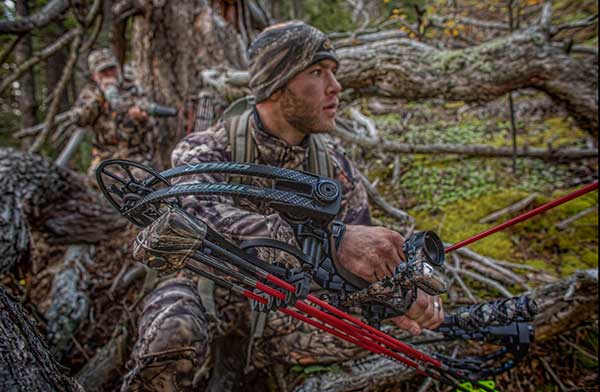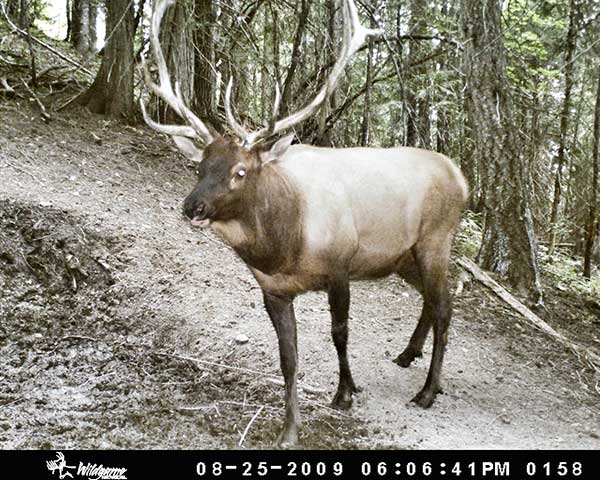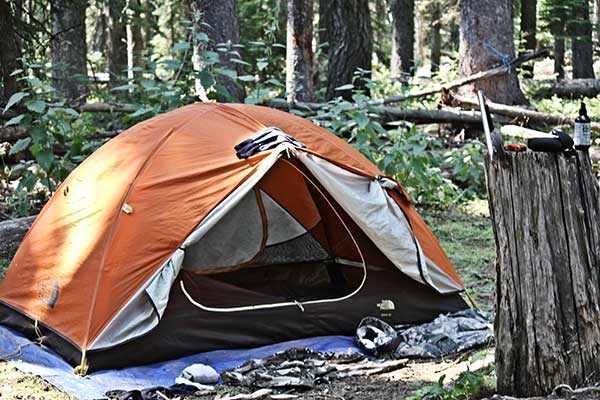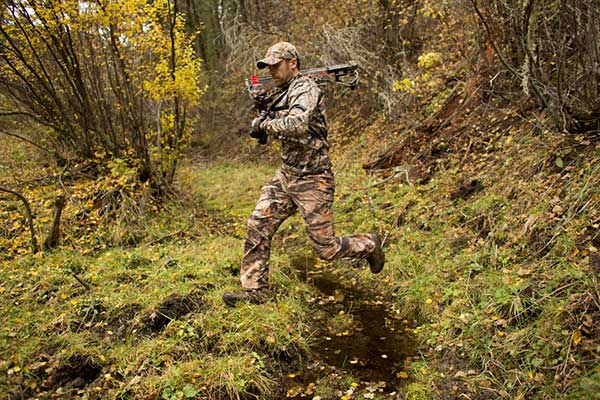LAST UPDATED: May 1st, 2015
The allure of public land elk hunting boils down to a super-tuned bow in the hands of an ambitious and determined bowhunter. Step onto to public ground turf with broken-in boots, zero cell phone service and zero Wi-Fi, and adventure waits around every corner. In my mind there is one month out of twelve where life is free of distraction and really simple. For me, public ground elk hunting is my ultimate challenge and there’s a few reasons why. These government land dwelling bulls create quite the lure because they are sharp and outwit numerous hunters each year.
Public ground bulls thrive in the country that hosts many predators and harsh winters. To harvest one takes many considerations and timely luck as well. Few hunting accomplishments stand up to the feeling of bagging a public ground bull on your own, and we’re about to cover how to go about it. First we’ll dissect ways to effectively scout public land, then break down some of the logistics that get overlooked and lastly we’ll cover some proven hunting tactics that will help you close the deal.
Bowhunting for elk is no easy task, however it can be made even more difficult when done on highly presured public lands.
The Scouting Process
Public ground is accessible by everyone. Miles of game trails, ATV, horse, and hiking trails are available to those who seek to find them and are often crowded with hunters seeking the same reward as you. To have a chance at bagging a bull one must find tucked away spots that are jumbled with canyons, lush benches and good water. Basically, the harder to get to; the better hunting! A public land elk hunter should rely heavily on pre-season scouting, and there are three areas of scouting to pay attention to. The first is to discover productive areas, the second is to identify the right kind of sign, and finally, figure out what specific animals are living in these areas.
To find honey holes on public land, find areas that are physically harder to access. Some roads have locked gates and allow walk-in access only; this is where to start. You have to become intimately familiar with the country and if the only time to do so is in-season, then your uphill battle just gained more vertical. If possible start scouting as soon as the high country snow begins to dissipate. Where I hunt elk in Idaho, my main transportation is a dirt bike with a chainsaw mounted on the front. Each spring I saw out the year’s downfall and blaze into new promising locations that are hard to reach. By hard to reach I mean, single track trails that cross over ridiculously fast moving creeks, death defying switchbacks, and gnarly stretches of rutted out single track. Once you’ve reached a basin or drainage that looks legitimate, start hiking and searching for clusters of last year’s rubs, elk highways that side hill their way from ridge to ridge. Establish south facing feed sources, north facing cover, and of course water in the form of springs, feeder creeks and main creeks. Elk typically rut in the same general areas each year if they’re not disturbed by wolves or hunters. Public land elk will almost always get bumped, so it’s imperative to also find the niche areas that elk will retreat to once they get pressured.
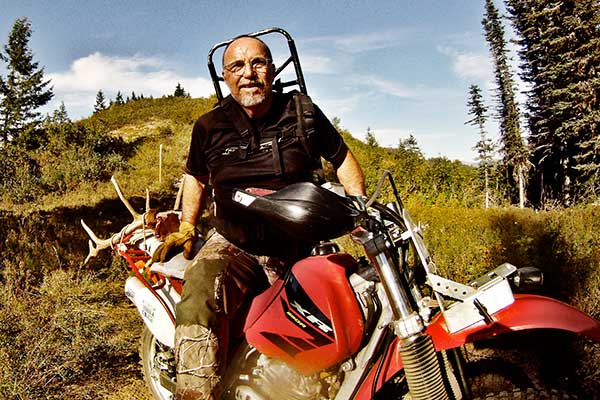
I hunt about 3 different drainages in a season, and in each system I put 3-4 trail cameras out way ahead of season to get a full inventory of the animals and their patterns. The cameras need a bear case, a lock to discourage theft, lithium batteries to ensure battery life and a big memory card ranging from 16 GB to 32 GB. I put most cameras on a 20 second video mode over water or main travel trails. If legal in your state, throw out a mineral block to enhance your activity. My cameras come out of the woods late August around the time most bulls have rubbed off their velvet and have started to go into a pre-rut stage.
The first step to being successful in bagging a public land bull elk is locating an elk to hunt. The author uses several trail cameras to help him identify the areas he wants to hunt come fall.
Overlooked Logistics
Before leaving town to scout I bring with me printed maps from Google Earth coupled with topography maps of the same area. You can and should get the satellite images that overlay in your GPS. When hunting public land, one of the best tools as of late is the GPS chips that show land boundary, that way you know if you’re on public, private, state, BLM, and of course National Forest. The goal is to have a handful of elk areas to rotate from over the course of a 7-day hunt. Disperse the amount of human pressure you put on these elk spots to insure quality hunting. I’ve literally seen hunters pound the same spot day in and day out for an entire week, and rarely do you see any of them get blood on their hands.
I set up one spike camp per drainage, that way I can hunt hard and spend little time traveling from camp to hunting ground. Set up near a creek, most of the time lower than the elk to keep scent out of the elk’s nostrils. In the morning leave camp just before light and hunt up towards the elk with the wind in your favor, mean while other public land hunters are driving their ATV’s above the elk and battling unfavorable thermals while you’re making a play on the herd.
Setting up multiple spike camps, like the one above, provides an easy way to move between hunting areas in order to minimize your pressure on the herd and find active bulls to chase.
The last overlooked logistic is learning the best way to access the spot once the season arrives. If you spend a few weekends in the area, you’ll start to piece together the prevailing winds, the timing of thermals, and calculate how long it takes you to get to the spot from your rig. I attribute past success to areas that have limited access points, that require sweat equity to enter, and places that I’ve bankrolled many seasons in. Now let’s go more in depth on how to close the deal on highly educated elk that reside on public land.
Locate
My first rule of elk hunting goes like this, “You have to have a bull picked out to hunt before you climb into your sleeping bag.” Quit wondering around in the morning bugling down every draw hoping to find a bull to go after. If you’re in bed without a game plan, you already planned to fail. I try to have 3-4 good spots to bounce to and from over the course of archery season. I do not hunt the same spot two days in a row. When the sun goes down in the evening, my hunt for the next day has already begun. I will drive, ride, or hike in the dark until I can get a bull to answer my single note locator bugle. These low-impact social calls really do the trick. It’s my way of taking their temperature and finding the right bull to go after.
I need a bull to be fairly vocal in order to intercept the following day. This sacrifice of sleep pays dividends. For example, I sometimes have to hike two hours out of a hole in order to get back to my dirt bike. Then a treacherous 30 minute ride in the dark in order to get back to base camp. By the time I have supper in my belly, it’s getting close to 9 or 10pm. Rather than go to bed, it’s time to go find tomorrow’s bull. I’ll spend a few hours outside of base camp listening for bugles in the arid calm of the night. Launch a few non-intimidating bugles here and there, and hopefully you’ll be able to pinpoint the location of a herd to hunt at daybreak. This is the price to pay in order to maximize your banked vacation hours in elk country. Now that we have a general idea of where to find a big bull to hunt, let’s explore a potent tactic that just may have you at full draw on a trophy public ground bull.
Run Silent, Run Deep
Almost all of my public ground bulls were killed hunting solo by sneaking in on vocal elk. Public ground bulls get pestered near every road at all hours of the day by amateur elk hunters. These poor folk have watched too many elk hunting DVDs and actually believe their calls are effective, but most times they get bulls to answer but never to come into range. If anything, the bulls quickly catch wind of the synthetic elk sounds and their IQ increases making them even harder to kill. I’ve seen cagey old bulls vacate supreme breeding ground after being invaded by a barrage of man-made elk calls.
So the first thing to note is a word of caution when it comes to calling elk. You can call these bulls in, but very seldom. If you’re not herd bull hunting, this still might be a decent game plan given you’re calling is proficient, timely, and done with at least one partner. A mature bull is not coming to your call nine times out of ten. You need to be a stealthy sniper. Most herd bulls are greedy lovers, they don’t leave their cows unattended. They’re preoccupied with keeping the herd rounded up and do most of their bugling to and from bedding areas or at night. You have to know where they’re bedding and how they return from the dinner table. The challenge is getting into position, keeping the wind favorable, and letting the herd pass by until the bull brings up the rear.
When running silent, you have to be able to dog the herd for probably a few miles, you have to be in great shape to keep up with the four-legged animal, you have to dodge numerous sets of eyes, avoid noisy brush, and keep the ever-shifting mountain air in your favor. The bull’s audible clues will lead you along the way and Lord willing you will finally get yourself in a position to take one shot.
Bowhunting public land bull elk is a physically demanding challenge. Be sure you’re in great shape before your hunt as it may mean the difference between success and failure. Hunter seen wearing Lost Camo.
Now you’ll have to execute a well timed draw of your bow, a soft cow chirp from your diaphragm call to stop him in his tracks broadside, and then aim and shoot a specific tuft of hair in the kill-zone! You have to do about 100 things correct for this scenario to happen, but it’s definitely your best bet in my experience.
The last bit of advice on public ground bulls is to avoid going after them in certain areas. Certain pockets in the mountains swirl round the clock. A smart, old, big bull will find these areas and reside in them. Some spots like this are better if you hang out on the fringe and wait for them to make a mistake. You can gain their curiosity by calling to them, but not allowing them to get your wind. You will have to be extremely disciplined and stay out of the wind trap, and entice the bull to come and take a peak. Patience and persistence can really pay off on this scenario, otherwise, just move on to another area. Wind proof bulls exist all over public land, and trust me, you can not fool the nose of a wise old public land bull.
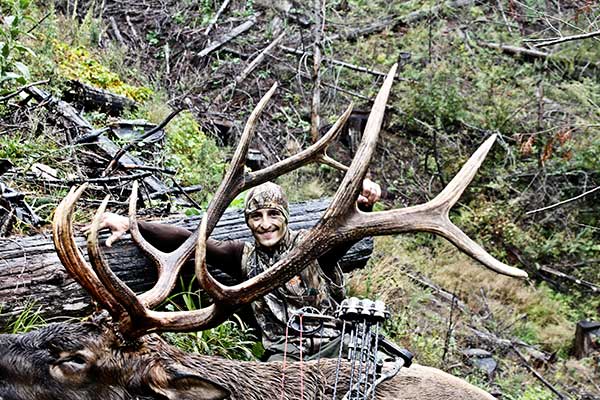
Public ground hunting for bulls is my favorite kind of hunting. The lure of harvesting a bull that has been around the block a time or two doesn’t get old. Finding a bull that has not been harassed and reached its full maturity is what it’s all about. Even though times have changed and there’s many hunters in the woods, hopefully you can borrow some of the ideas mentioned and put them to work for you. Make sure you’ve done your homework on which state to do your bidding, scouted away from mid-season, found your bull to hunt each day no the matter how much sleep it cost you, and successfully stalk your way to that trophy herd bull of a lifetime.
About the Author:
Dan is an avid bowhunter residing in the beautiful Inland Northwest. Who owns and operate CrossFit Spokane Valley, you can find more from him on his website ElkShape.com or follow him on Instagram @danthefitnessman.

